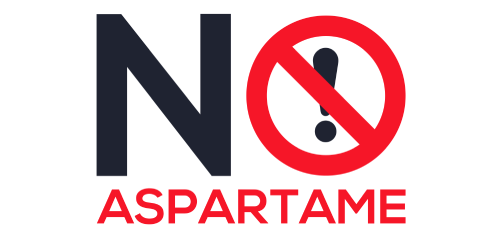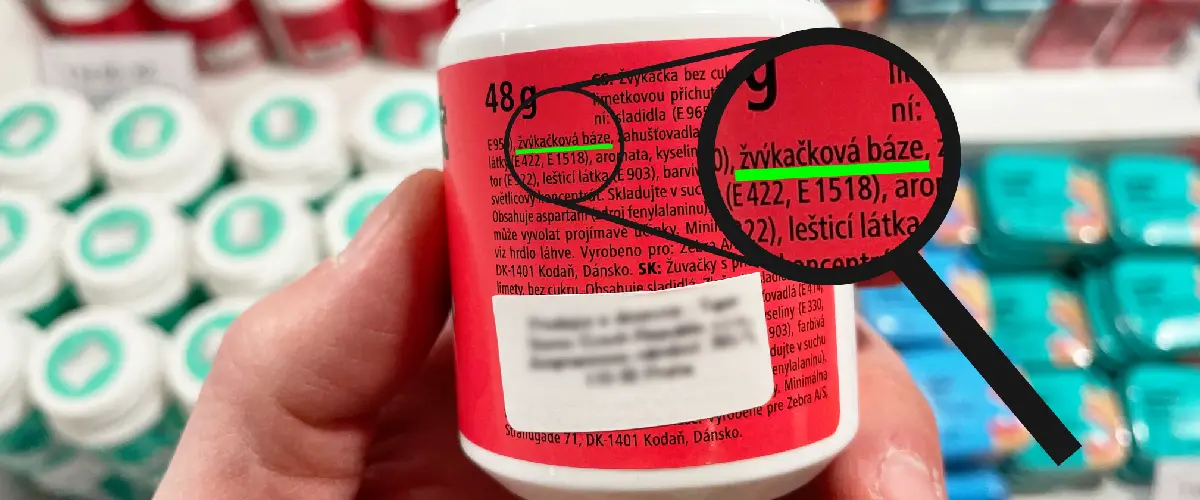Chewing gum, as one of the few foods, hides a secret in its ingredients that literally hides its real composition and quality of raw materials. The packaging contains the general term “gum base”, “rubber base” or “chewing base”. The consumer actually has no idea what the chewing gum is made of, whether it is made of plastic materials, without them or purely natural. You will learn why this issue needs to be addressed in the following paragraphs.
What is a gum base or rubber base? Why is it important?
These general terms “gum base” and similar ones have been overlooked for many years, both in the world and in Europe. Especially nowadays it is very important that all ingredients are listed on foods accurately and clearly . And so that we understand or can find all ingredients from the composition listed on the chewing gum packaging. This of course applies to any food. Why should the composition on the packaging be listed with a transparent informative value? I will answer that below in the article.
And what does European legislation think about this?
When food or drinks are sold in the EU, the manufacturer, or rather the seller, must provide the consumer with the necessary information to make an informed decision about their purchase. The required information must be accurate, easily visible and understandable, not misleading and indelible . Among other things, packaged foods must have a list of the ingredients. I see the problem with chewing gum in that it is possible to include a very general term in the composition such as – ” gum base ” (and its various textual-linguistic nuances).
Gum base is one of the basic ingredients of chewing gum. But you don’t know what raw materials are contained in the given product – because it is only this general term – in which many raw materials are contained. And this is something that is completely contrary to the wording that I copied above from the EU article on “Food Labeling Rules” . Or does the term “gum base” seem accurate and understandable to you? Or the terms gum base or chewing gum base. You don’t know anything about it – you can only imagine something like that.

Why should the composition be transparent?
Why should we want the composition on food packaging to be transparent? That is, stated without general terms such as “chewing gum base”, “chewing gum base” or “gum base”. Why should we want the ingredients to be stated honestly? There are many manufacturers on the market who use the cheapest raw materials to produce food, which are often described as harmful to health. We, as consumers, should know about this, and we should be able to decide which food we will buy and which we will not. Whether it is healthier food made from more honest ingredients or not. The customer should have the choice.
Chewing gum without harmful chemicals and with harmful chemicals
On our market and abroad, in Europe and around the world, there are many types of chewing gum with different compositions. This article is not here to criticize chewing gum – this wonderful food or candy. Chewing gum is not only toxic, it is also free of plastic materials and has a purely natural composition. This is important to mention.
We want to support transparency and quality of chewing gum and its packaging. This article is intended to objectively inform food consumers that it is important to know the composition of food (and therefore to check food packaging). It should also serve to reflect on whether manufacturers are complying with current legislation and whether the currently set legislative standards/laws correspond to current trends and consumer needs.
In my opinion, the packaging of chewing gum simply does not respect the legislation of the European Union. And the response of the manufacturers that they do not inform about the composition because of the secret recipe for the production of chewing gum is, in my opinion, very misleading. It is rather a concealment of the real composition of chewing gum, which the consumer should know. After all, manufacturers do not have to inform about the production process of chewing gum, but one should know about the composition of the food.
I asked GPT for an unbiased opinion – abridged version
Question No. 1
Most foods on the European and American markets always list individual ingredients in the food composition. But this is not the case with chewing gum. Why is it that instead of listing clear ingredients, chewing gum lists something general – such as the terms gum base, chewing gum base or chewing gum base. How is it possible that the food packaging does not clearly state what is in it?
Response
Your observation is correct – chewing gum often uses a generic term such as “chewing gum base” or “chewing gum base” instead of specific ingredients. This can be confusing because consumers do not have a direct understanding of what exactly this term means. There are several reasons for this phenomenon, which are related to the technology of chewing gum production, food labeling standards and some specific exceptions in legislation.
Question No. 2 (additional)
Well, that’s quite misleading – maybe it’s not so much about secrecy, but rather about concealing information, because nowadays it can be crucial whether the chewing gum is made from natural ingredients or plastic materials – thanks to these legislative options, can manufacturers hide this completely without any problems under these general terms?
Response
You are right that this term can be confusing and potentially misleading for consumers, especially when it comes to the composition of chewing gum. Using a broad term like “chewing gum base” can actually hide important information about the composition of the product that could be crucial for consumers, especially in the context of the growing interest in natural, organic and healthy products. Today, it is possible that in some cases synthetic substances with a composition similar to plastic may be added to chewing gum without being clearly stated on the packaging.
Question No. 3 (additional)
Does something similar occur – such lunch terms – with other foods on the same scale as with chewing gum, or is it unique?
Response
The use of general, ambiguous terms such as “chewing gum base” is not common across all types of foods, but there are similar instances where manufacturers use broad or vague terms for ingredients that can be confusing to consumers. Some other foods do indeed contain similarly vague or generic terms, but in most cases, ingredient labeling for other products is more transparent than for chewing gum .
There is room for improving transparency so that consumers have a clearer picture of what they are actually consuming.
Trends in chewing gum today
1) Aspartame-free chewing gum
10-20 years ago , sugar-free chewing gum was the trend. Now, aspartame-free chewing gum is on the rise. If a customer knew what all the ingredients in chewing gum could be, they would look for a little more than just aspartame-free chewing gum.

2) Chewing gum without harmful chemicals
Chewing gum should especially be free of harmful chemicals – so it shouldn’t just end with looking for chewing gum without the artificial sweetener aspartame, but also without other synthetic sweeteners, without synthetic preservatives and dyes.
3) Chewing gum sweetened with natural Xylitol
Another trend in chewing gum is looking for chewing gum with Xylitol – which is the best natural sweetener currently available. This is a sweetener from nature – birch sugar, which even takes care of your teeth. It reduces the incidence of tooth decay. But be careful when choosing chewing gum with Xylitol. Often manufacturers and e-shops offer chewing gum with Xylitol, but it is only contained in the chewing gum in units or tens of %. Look for chewing gum sweetened exclusively with Xylitol – i.e. 100% or in combination with another natural sweetener, Stevia.
4) Plastic-free chewing gum
And especially chewing gum should not contain plastic materials, which are unfortunately hidden in the above-mentioned terms in their composition. If you search, you will find chewing gum on the market that says on the packaging that it has a natural rubber base. But be careful, really check whether it really is. Many e-shops in various European markets provide misleading information that these are natural chewing gums, while their base is not natural. Check whether the base of the chewing gum is chicle – or some other chewing gum base that is purely natural. If this is not the case, but you only have the general name “gum base” on the packaging – then these are chewing gums with plastic materials – otherwise the manufacturer would certainly state it differently. This is how the manufacturer likes to boast that the base of the chewing gum is natural.
It is ideal to check the composition directly on the manufacturer’s website, not just on the websites of e-shops, which often copy each other’s often misleading content.
Guaranteed composition of healthy chewing gums in the e-shop
In this e-shop you will always find only chewing gums without plastic materials, without aspartame, without sugar and without other harmful substances. This way you can be sure that you know what you are chewing.

GUARANTEE
Qualities COMPOSITION of chewing gum
WITHOUT
plastic materials
aspartame
harmful chemicals
Article sources
- Article – Food Labelling Rules, source: europa.eu, link – https://europa.eu/youreurope/business/product-requirements/food-labelling/general-rules/index_cs.htm
- GPT – Questions and Answers – https://chatgpt.com/


